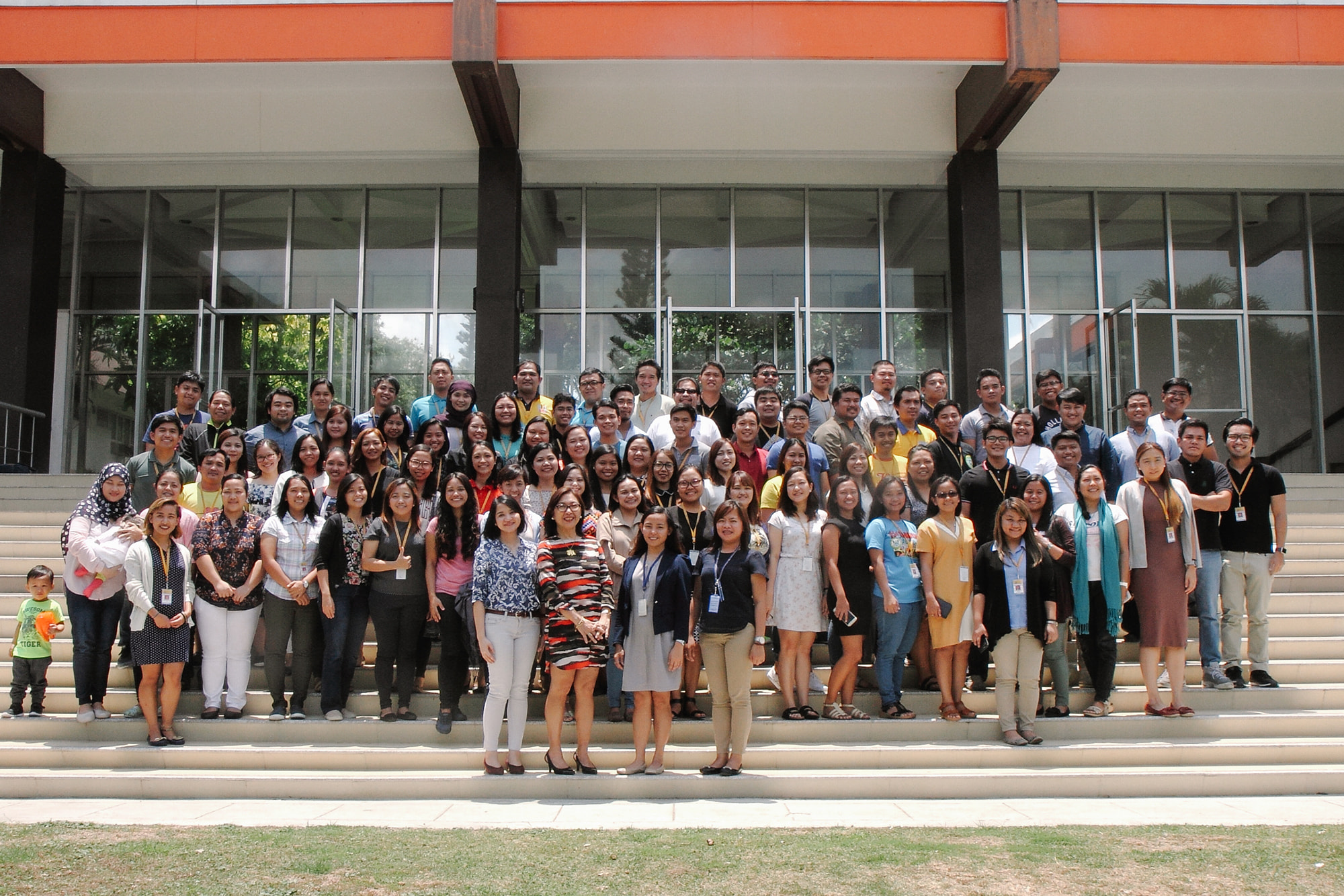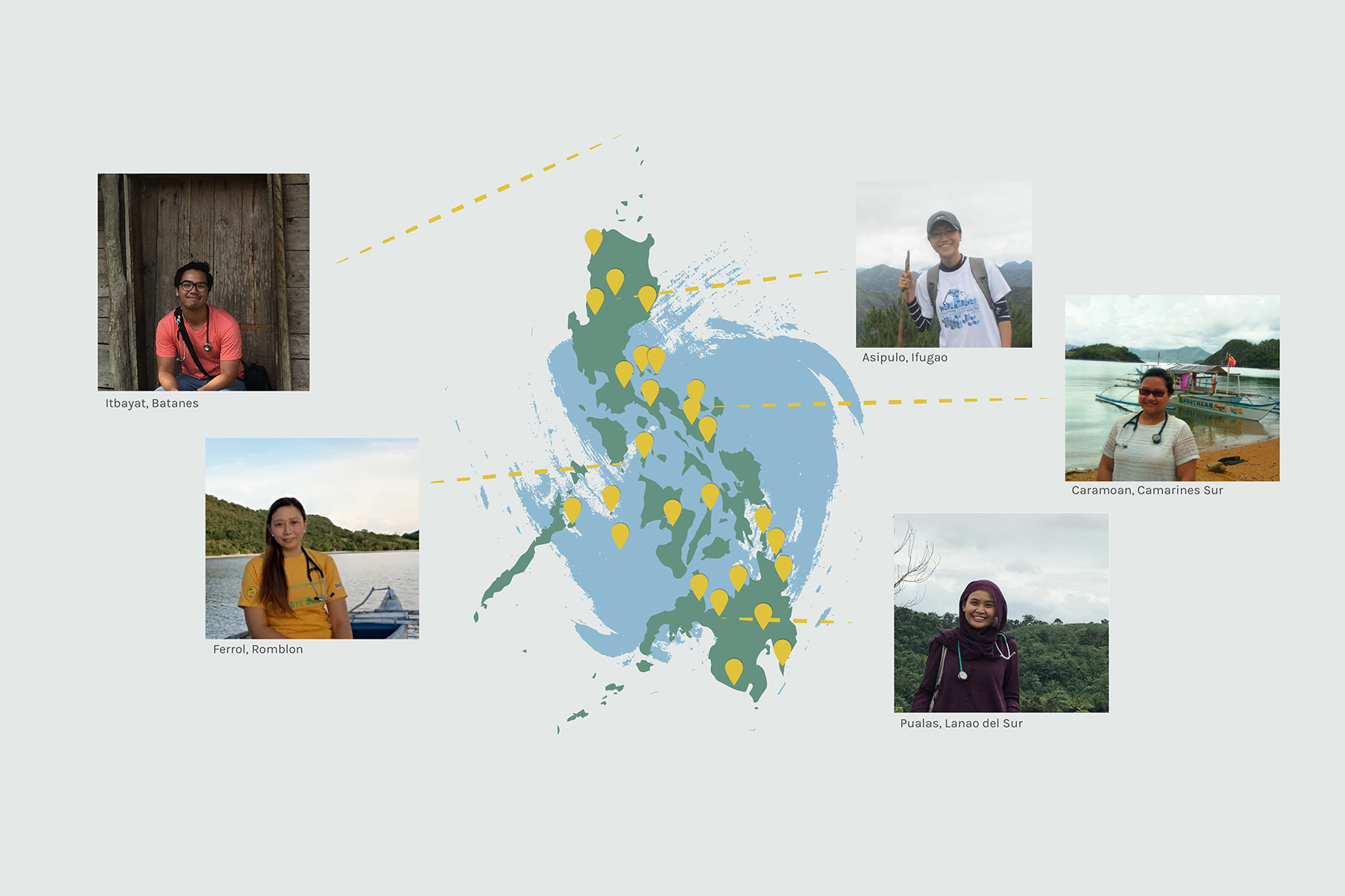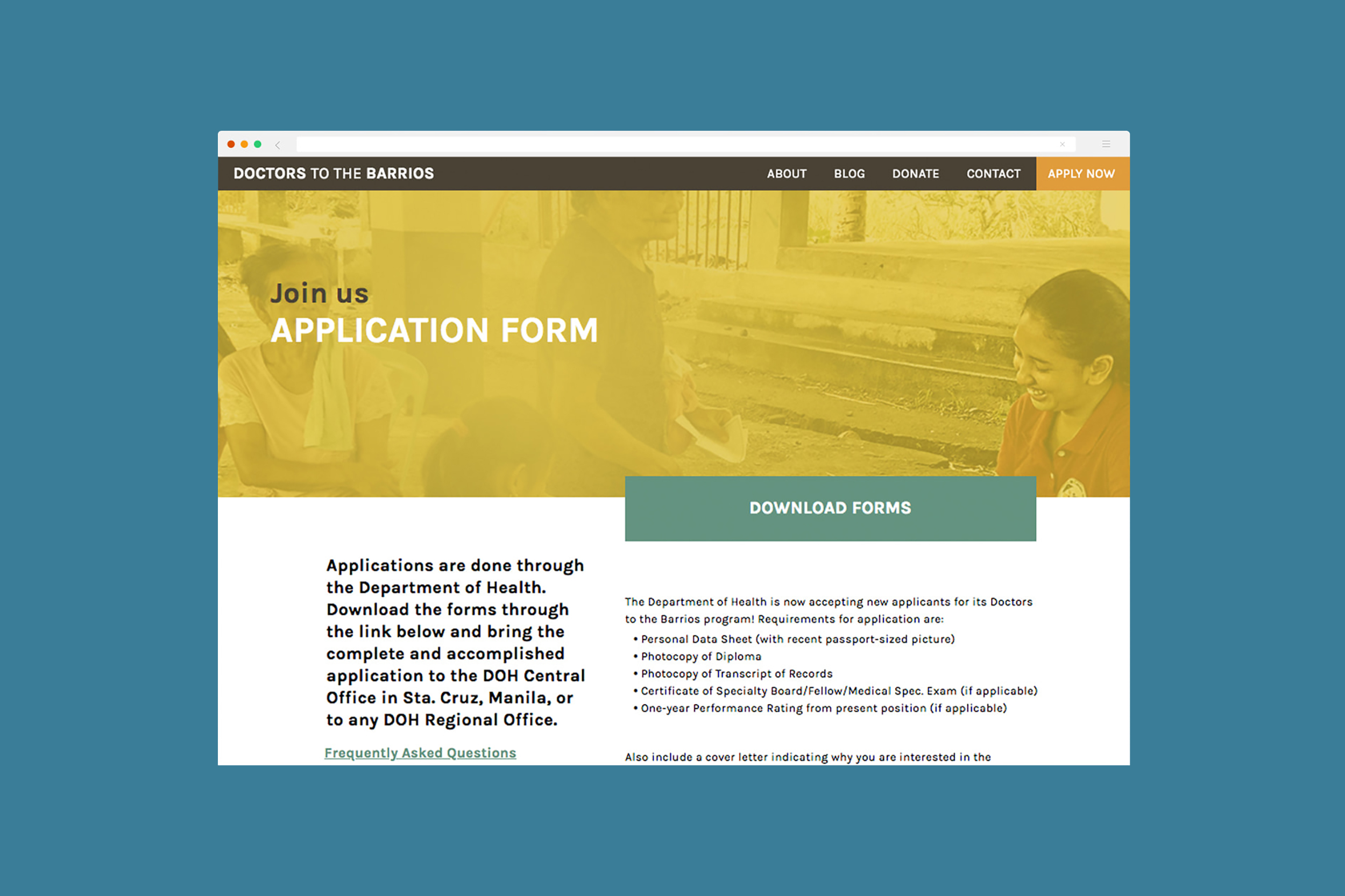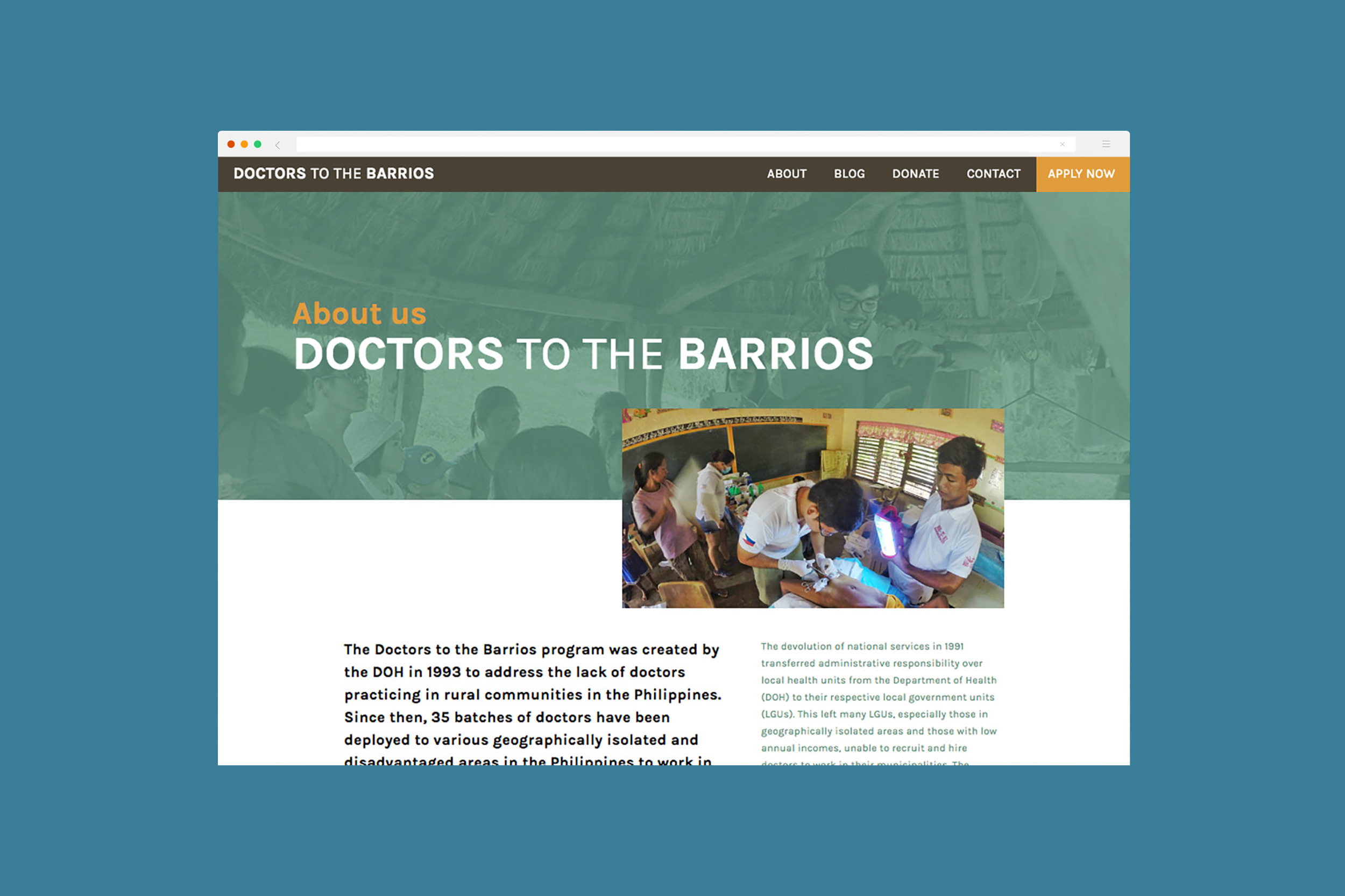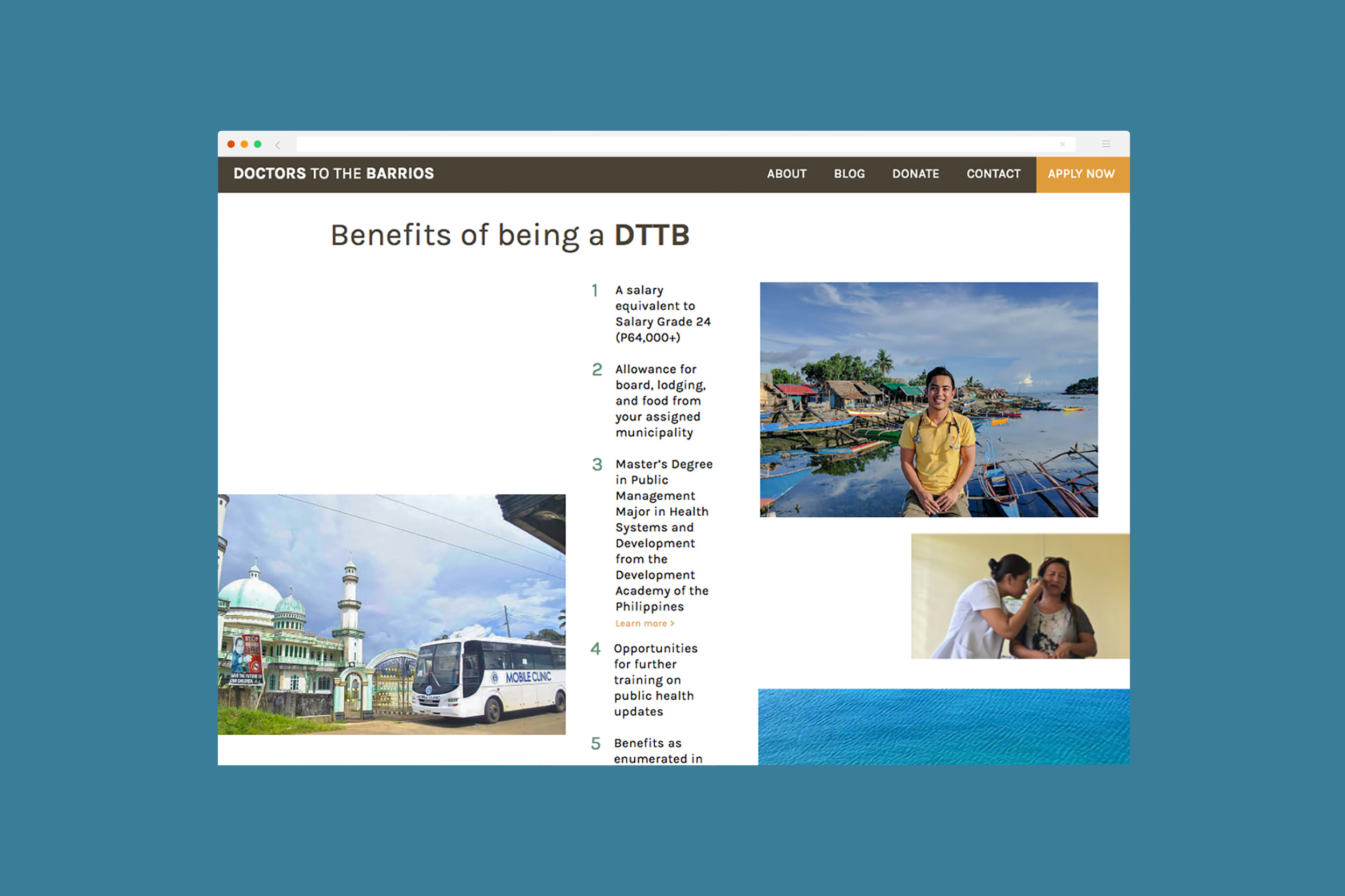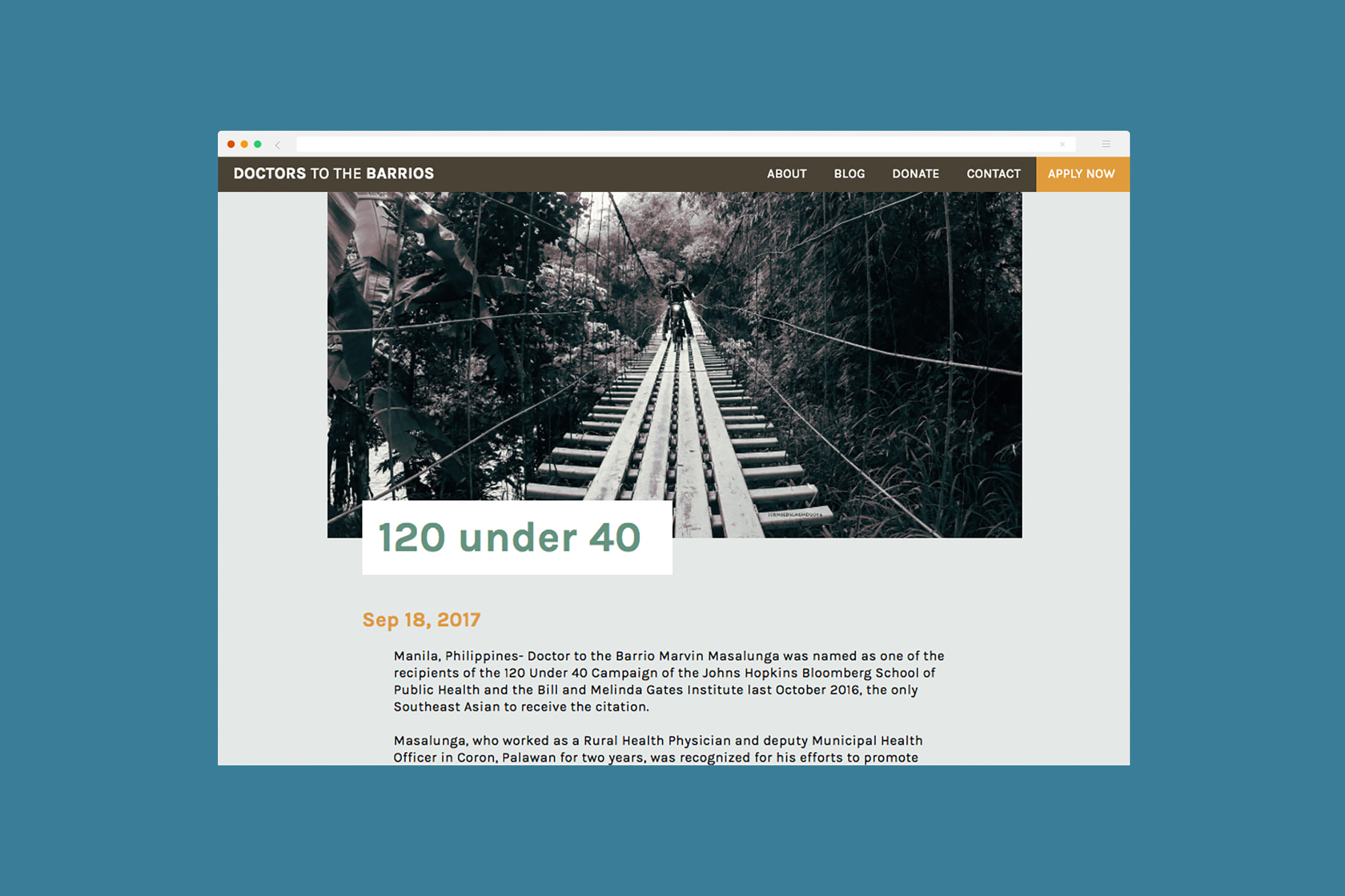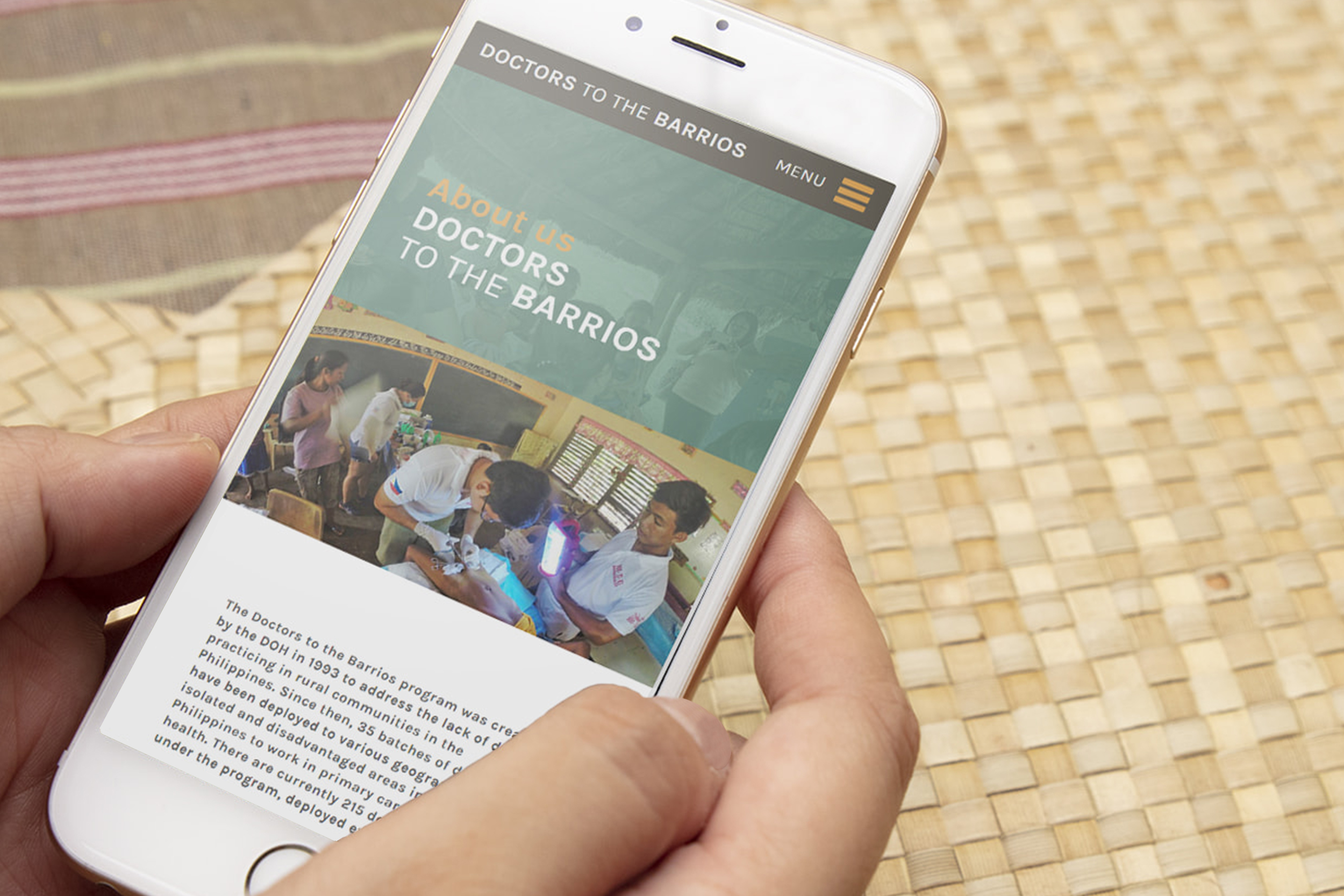
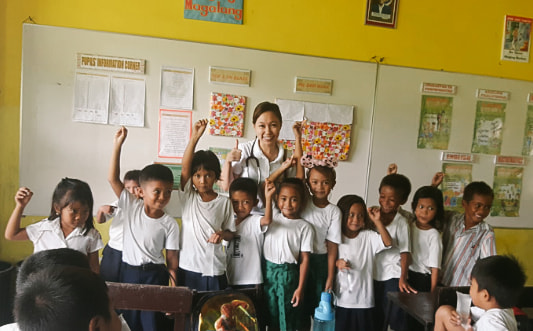
Doctors to the Barrios send doctors to far-flung areas in the Philippines who have little to no access to aid or medical support.
Public healthcare in the Philippines faces a dearth of difficulties, given the country's population and socio-economic situation.
Given this unfortunate hand, projects like Doctors to the Barrios, a Department of Health (DOH) initiative that addresses the lack of consistently available healthcare in rural communities, have their work cut out for them. On top of engineering the program itself, how do you even achieve a constant stream of volunteers, especially with the high urban concentration of medical professionals and the tendency to pursue better opportunities abroad?
Finding the right route
After consulting with CJ Nazareth, the president for the 35th batch of Doctors to the Barrios, it occurred to us that it wasn't anything about the program itself that made it difficult. Our oversight, surprisingly, was much simpler: young medical professionals just didn't know about the program. While some had vague ideas regarding the existence of Doctors to the Barrios, some, quite frankly, had never heard about it.
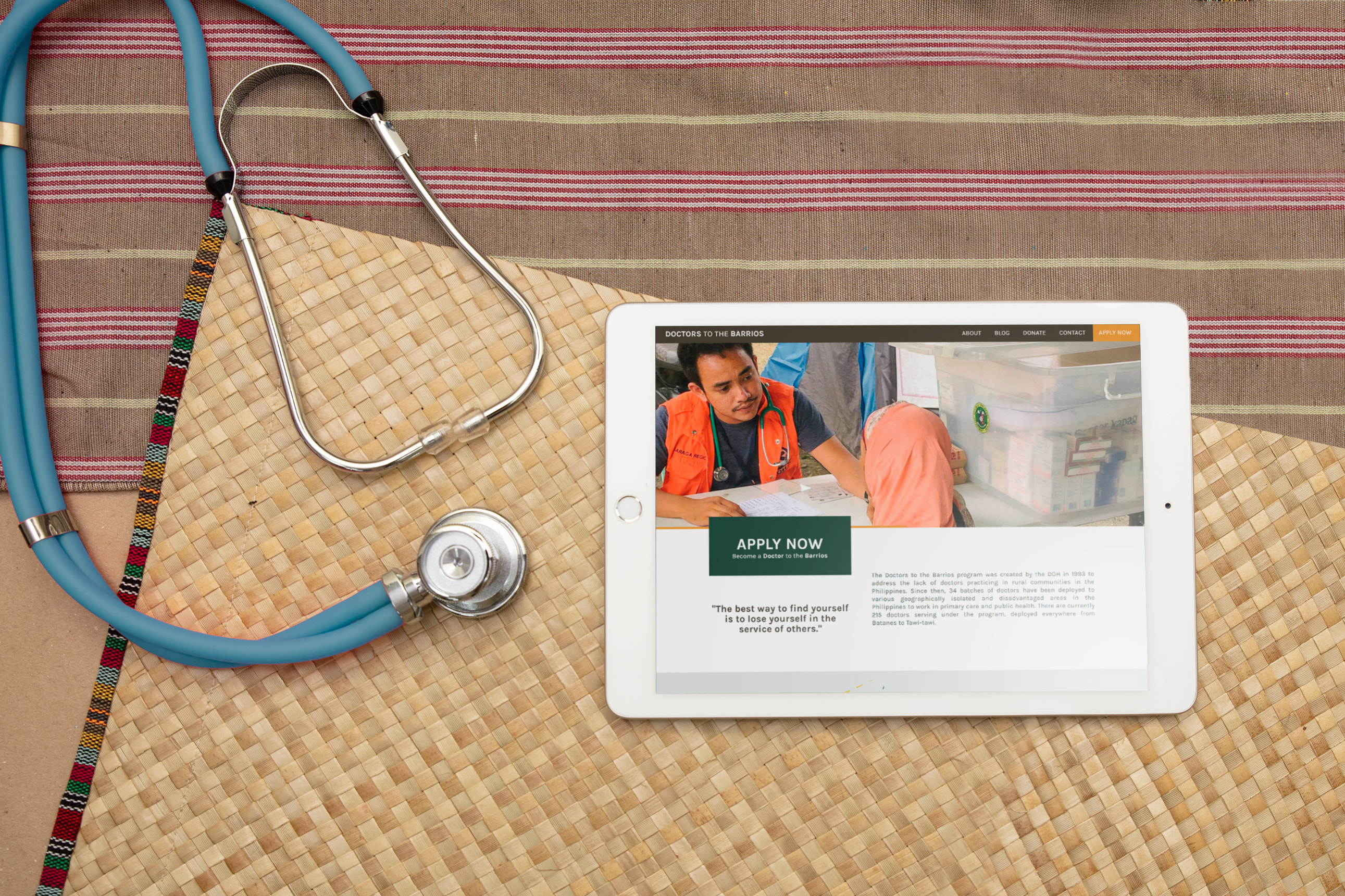
As it turns out, making it a priority to present that option matters. In the past, a quick Google search for Doctors to the Barrios only led to a short explanatory paragraph in the DOH website. It was a possibility, but it was not a pursuable option. A comprehensive website for Doctors to the Barrios, we thought, would clarify and simplify for everyone what Doctors to the Barrios is about—it would capture the program's breadth and depth, and it would be convenient for visitors to express their interest in volunteering.
Our oversight, surprisingly, was much simpler: young medical professionals just didn't know about the program. While some had vague ideas regarding the existence of Doctors to the Barrios, some, quite frankly, had never heard about it.
Road towards the barrio
Although it is easy to search for Doctors to the Barrios online, the only information available was a short description of why it exists and its history. Though DTTB had an online presence, it was nowhere near sufficient enough to indicate that it is an ongoing program, and it did not even indicate that applying for the program is even possible.
A lot of what we designed in the website was geared toward alleviating these problems. We crafted pages that talk about the program in detail and the benefits of applying to the program; we also created a simple instruction form for interested applicants. Aside from that, we chose to highlight and appreciate the doctors who dedicated their time to join the program. Each page played an important role in making potential applicants feel more at ease with joining the program.
Destination and direction
The new website had no magic formula: it contained stories, details, and instructions. It was the what, the why, and the how. Yet what we learned, most strikingly, when applications ballooned to a 300% increase compared to previous batches, was this: the cause did resonate with the community. These medical professionals wanted to volunteer and station themselves in these oft-isolated and in-need municipalities. These doctors wanted to reach out. So, along with the organizers of Doctors to the Barrios, we found our response: we wanted to reach out, too.
